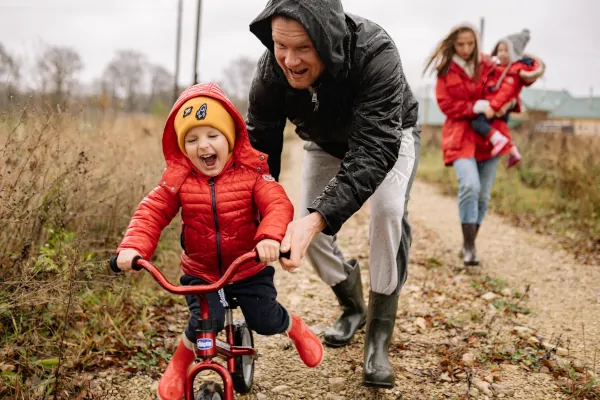In the delightful hustle and bustle of early childhood, there’s hidden magic in the simplest acts – the skipping, hopping, and wobbling of the first steps towards a lifetime of health and movement. For parents of 2 to 5 year olds, fostering the development of balance and stability is not just about preventing tumbles but about laying the groundwork for a future of confident exploration and physical literacy. This nurturing requires more than just watchful eyes; it calls for creative, engaging strategies that blend seamlessly into your child’s everyday life.
Understanding the Basics of Balance
The skills of balance and stability are the hidden champions of physical competence, integration, and progress in young children. They underpin the development of core strength, proprioception, and the intricate vestibular system, which collectively form the bedrock of motor skills. Additionally, the cognitive demands of maintaining balance sharpen spatial awareness, concentration, and problem-solving – building blocks for the later complexities of reading, writing, and attentiveness in school.
Creative Play Ideas to Enhance Balance
Regular play that involves dynamic movement and spatial challenges is an excellent way to enhance balance and stability. Simple games such as “Stuck in the Mud,” where children must stand as still as possible, on one foot or tiptoe, encourage focus and control. For a touch of whimsy, an at-home obstacle course with pillows to hop over and lines to walk along can turn balance practice into a thrilling adventure.
Another engaging activity is the use of balance boards or cushions, which can be integrated into storytelling or playtime. Children can act out a tale while teetering on a balance board, adding a layer of imaginative play to their physical skill-building. Dancing to music with varying tempos, or following along with yoga for kids, also injects fun into balance practice.
The Role of Toys and Equipment in Stability Development
Selecting the right toys and equipment can be pivotal in your child’s stability development. Age-appropriate ride-on toys, balls, and jump ropes can become essential companions in this quest. A rocking caterpillar or a tandem balance bike can serve as both playmates and coaches, gently encouraging the child to find their center point.
Parents should be on the lookout for items that support your child’s weight, are non-slip, and encourage correct body alignment. It’s not just about the tool, but how it’s used – a dense cushion can become an island in an imaginary sea, challenging your child’s balance as they make their way across without “falling in.”
Safety First in the World of Stepping Stones
When it comes to setting up play areas for balance-focused activities, it’s important to create a safe environment where kids can test their limits with peace of mind. This means considering the height and softness of surfaces, ensuring the absence of sharp edges, and supervising play sessions, especially in the beginning stages of a new activity.
Illuminating the concepts of safe falling – bending the knees and tucking the chin – can prepare children for that inevitable misstep without fear. These precautions not only reduce the risk of injury but also instill a sense of confidence and self-correction, fundamental components of balance mastery.
Incorporating Balance Building into Daily Life
Everyday routines can be enriched with opportunities for balance training. Encourage your child to help with simple household tasks like carrying their own plate or watering the plants, which require a degree of equilibrium. Bath time is another instance where standing on one foot to wash or reaching for the sky can become playful exercises in balance.
Walking to the park instead of driving can be a family adventure teeming with chances for balance-awareness activities. Counting the steps it takes to get there, skipping along cracks in the sidewalk, and even the act of climbing a tree under your tutelage are odes to maintaining equilibrium in varied scenarios.
Celebrating Success Stories of Growth and Stability
Nothing is more rewarding than witnessing your child stand tall with newfound stability. By sharing experiences of your child’s progress, you not only reinforce the value of these activities but also inspire other parents. Whether it’s a story of confidently pedaling on a two-wheeler or navigating play structures with grace, these moments symbolize more than just physical prowess but a resilient spirit ready to tackle new challenges.
Conclusion: Balancing Play and Purpose
Fostering the art of balance and stability in our children transcends the playground and becomes a metaphor for the balance we strive to achieve in our own lives. It’s about finding equilibrium in learning and play, caution and confidence, as we guide little feet on their wobbly yet wondrous path. Balance buddies are not just the toys and tools that assist us in this mission; they are the shared experiences, the laughter, and the mutual growth we find in these precious years. It’s a commitment to equilibrium that ultimately empowers our children – and us – to face a world full of exciting adventures, balanced and ready for anything.

